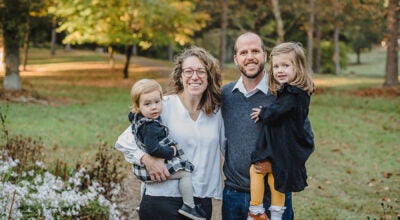Author Chris Bohjalian brings ‘Skeletons’ to Catawba
Published 12:00 am Tuesday, December 1, 2009
By Deirdre Parker Smith
dp1@salisburypost.com
Chris Bohjalian preached to the choir Thursday morning at Catawba College’s Brady Author’s Symposium when he lamented the state of reading in America.
Almost everyone there is in a book club. And they lapped up his eloquent talk about his novels, which range from “The Double Bind” to his latest, a World War II saga based on a real diary, “Skeletons at the Feast.”
Bohjalian, whose book “Midwives” was picked for Oprah’s Book Club in 1998, is passionate about reading and writing, passionate about his subjects, his characters, his message.
“Skeletons at the Feast” is a heart-wrenching book with a redemptive, poignant ending. It is a book Bohjalian felt a duty to write and write well. “I felt a moral responsibility” to the people he interviewed, he said.
He had not imagined writing a novel when a friend asked him to look at his wife’s grandmother’s diary. “I thought, please, no … Anne Franks are few and far between,” but he did read it.
“It was 180 pages, 150 about sugar beets, 30 about World War II and five riveting pages.”
The character of Mutti in the book was, in real life, the owner of a baronial estate with 18 bedrooms. They did have POWs, mostly British, who helped on the farm, which grew sugar beets in “concentric circles as far as the eye could see.” The mother moved the prisoners into the house in the winter because she realized the bunkhouse was too cold.
She doesn’t know about the German atrocities, but she is afraid of what might happen. So she gives up everything and marches with her two daughters westward towards the American and British lines.
Bohjalian shared the diary with Random House and the University Press of New England. Neither was interested.
“That’s a lotta beets,” they said.
Bohjalian was working on “Midwives,” “Buffalo Soldiers” and other novels, but in the early 2000s read Max Hasting’s “Armageddon: The Battle for Germany, 1944-1945,” an account of the last year of the war in Germany. The numbers astounded him ó 750,000-1 million refugees plodding west.
The scene in “Skeletons at the Feast” in which Anna Emmerich, her mother and younger brother and the POW Callum Finella cross the Vistula River is real.
The diarist was in the next to last wagon to cross the frozen river before the Russians shelled the ice into slivers and hundreds of refugees drowned.
The love affair between 18-year-old Anna and 20-year-old Callum is based on relationships many British and American soldiers had with German girls. The diarist wrote about her daughters “dancing with seven lovely English boys.”
After reading Hasting’s novel, Bohjalian called a 77-year-old woman in Portland, Maine, who was the 16-year-old who fled with her family from the sugar beet farm.
That’s when he felt the drive to write the book. He began looking at the complicity of the average German family in the atrocities.
“You can’t kill 6 million people and not have someone notice,” he said. The last six months of the war on the easternmost front “were like the innermost ring of Dante’s Inferno.”
In the concentration camps such as Auschwitz, 800,000 people died in the last six months. On the other side, the Russian strategy was attrition ó it did not matter how many people died.
The remnants of the German army, middle-aged men and teen-agers, can’t surrender or desert ó there are enough Nazis left to kill them.
The line of refugees, mostly women and children, are joined by some soldiers, all moving west.
The survivors Bohjalian interviewed all “told stories of unbelievable cruelty and unbelievable kindness.” It was the kindness that led to survival.
Bohjalian said several elements drove the novel: The first in the love triangle between Anna, Callum and the young Jewish man, Uri, disguised as a German soldier.
The second is the story of Cecile, a French Jew on a forced march from one of the concentration camps during the coldest winter in decades. Her faith and her boots kept her alive. She is a combination of two people he talked to, a Polish woman, Gerda Weissmann Klein, who wrote about her adolescence and young adulthood, “All But My Life,” and a woman from Budapest, who did survive because she held on to her boots.
The third was reading “Suite Francaise,” by Irene Nemirovsky, about the exodus from Paris in 1940; she died of typhus at Auschwitz in 1942, but her daughters found her manuscript and published it in 2006. Cecile is an homage to Nimerovsky.
The novel is what he learned from the people he talked to, and the final element was his feeling of duty to them.
When someone in the audience asked about the title, she asked if the skeletons meant the feast was over and it was too late or if going to the feast would fill them up and flesh them out.
“Good question,” he said. “If I were a college professor, you’d get an A.” The title comes from an ancient practice in Africa and some other countries of actually bringing a skeleton to the party to remind people good times don’t last.
Anna’s uncle uses the phrase when he refuses to flee west, to dire consequences. “But the meaning is more oblique to me. It’s about the holocaust, the anti-war posters showing skeletons looking down on the battlefield, the travelers, Cecile and the other prisoners.”
Hope marks the end of the novel and shows in Bohjalian’s other works and his talks. He writes about ordinary people in extraordinary circumstances, the stuff of everyday life.
His next book, “Remind Me of Who I am” deals with domestic abuse and murder, featuring a minister, the 15-year-old daughter of the victims and a “new-age self hope guru who has written a book” and is something of a lunatic.
The possibilities are endless.





